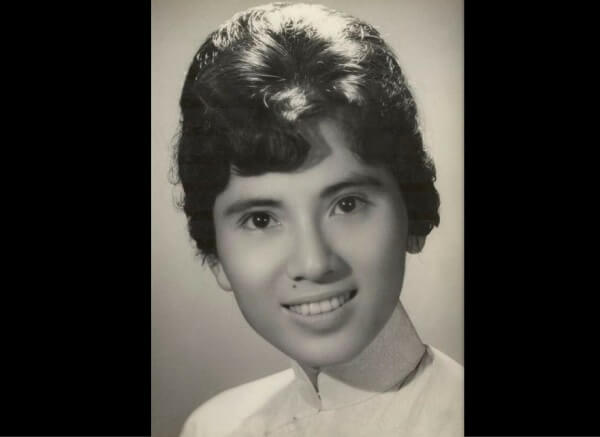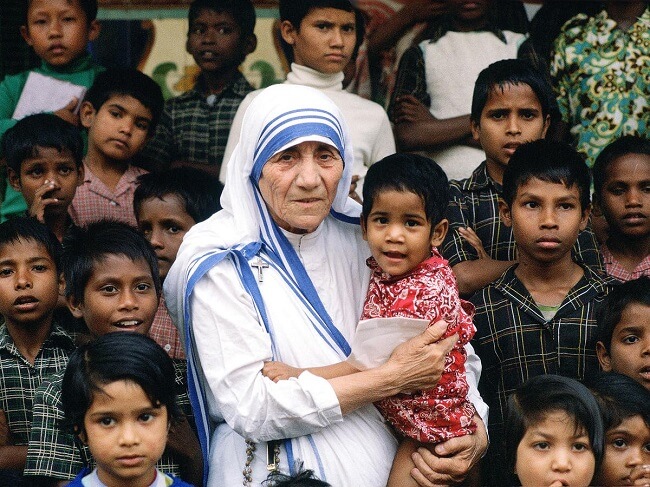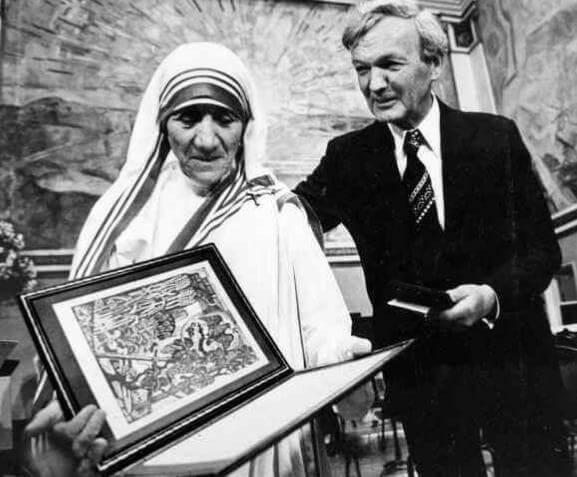Mother Teresa
For many years, man has been living on earth. But only a few people live their entire lives for others. They live to ease the sufferings of others. Their life's purpose is to reduce their pain and sorrows and spread happiness. Mother Teresa was one of the few. She had lived her whole life for the welfare of others. She became the support of the poor, sick, and helpless people. She will be the Global Icon forever. Mother Teresa, also known as Mary Teresa Bojaxhiu (MC; August 26, 1910 - September 5, 1997), was an Albanian-Indian Catholic nun and the founder of the Missionaries of Charity. She was born Anjezë Gonxhe Bojaxhiu in Skopje, a part of the Ottoman Empire. She left for Ireland at 18 before relocating to India, where she spent most of her life. She was proclaimed Saint Teresa of Calcutta on September 4, 2016. Her feast day is September 5, the day of her death anniversary. In 2012, Mother Teresa founded the religious order Missionaries of Charity, which has over 4,500 nuns spread throughout 133 nations. The Church oversees homes for those suffering from leprosy, TB, and HIV/AIDS. The Church also manages orphanages, schools, mobile clinics, soup kitchens, pharmacies, children's and family counseling initiatives, and orphanages. Members swear an additional vow in addition to their chastity, poverty, and obedience: "wholehearted free service to the poorest of the poor." Let's see her life journey of compassion and humanity. Also, don't miss the facts about Mother Teresa in the end: Early LifeMother Teresa was born on August 26, 1910, as Anjezë Gonxhe Bojaxhiu in Skopje, today the capital of North Macedonia, but was then a part of the Ottoman Empire. She was the youngest of three children and was raised in an Albanian Catholic household by pious parents. She grew up with great spirituality and compassion, thanks to her parents, Nikola and Dranafile Bojaxhiu. Mother Teresa displayed a strong interest in religion and a desire to aid others from a young age. She took after her Mother's charitable deeds and compassion for the underprivileged. She received a calling from God to work as a missionary and aid the underprivileged when she was 12 years old. When she turned 18, Mother Teresa left home and joined the Sisters of Loreto, an Irish community of nuns with missions in India. She underwent religious training in Dublin, Ireland, where she learned English. In 1929, she arrived in Kolkata, India, and began her work as a teacher at St. Mary's School for Girls. Mother Teresa established the Missionaries of Charity, a Catholic order devoted to helping the homeless and underprivileged, in 1950. The group quickly grew, and its members made vows of chastity, obedience, and poverty. They offered those in need support and basic services like healthcare, shelter, education, and support. Mother Teresa's dedication and selflessness garnered international recognition and support. She established homes, clinics, and hospices worldwide, extending her reach to Africa, Latin America, and other parts of the world. She became renowned as the "Saint of the Gutters" for her unwavering commitment to the marginalized and impoverished. Mother Teresa received numerous awards and honors throughout her life, including the Nobel Peace Prize in 1979. She continued her tireless work until her death on September 5, 1997, in Kolkata. Mother Teresa's legacy of compassion, love, and service continues to inspire millions, and she was canonized as a saint by the Catholic Church in 2016. The Tragic IncidentWhen she was only 9 years old, her Father, Nikola Bojaxhiu, died. After Nicola's death, his business partners ran away with all the money. At that time, the world war was also going on, and due to all these reasons, his family was also going through financial problems. That was the most tragic period for her and her family. 
But her Mother, Dranafile Bojaxhiu, was a very strong woman. She never lost hope. She took all the responsibilities to feed her family on her shoulders. She started a small business for her family's survival, selling embroidered and other crafted clothes. If later on, all these qualities come in them too. A Compassionate HeartMother Teresa was not her real name. Her childhood name was Agnes. She was a woman who was born with love and compassion in her heart. From childhood, Agnes' heart was filled with immense compassion. She was too pious from an early age and committed to charity. She got such great values from her Mother. Agnes and her Mother helped others as far as possible and always prayed for them. Dranafile regularly helped others by giving them food, clothes, and other essential items. Young Agnes (Teresa)Agnes had completed her schooling from Private Catholic School in the Albanian language. She was very attractive when she was young. She had brown eyes, which made her charming and attractive. Also, she was a brilliant scholar and always got the first rank. Agnes was the most lovable in her school and college as well. She was also one of the top gymnasts of her college. A Decision or The Turning PointAs Teresa got older, her life's direction and purpose changed. She was actively taking part in Church activities. Her childhood circumstances created a deep impact on her. Also, her Mother played a huge role in influencing her. In 1925, Agnes met with a priest named Father Franjo Jambrekovic. The Father believed that one cannot serve others as long as one indulges in materialism. These thoughts of Father had a great impact on Agnes, and she shifted her life towards simplicity. After her graduation, Agnes decided that she wanted to be a Nun and would serve humanity. A nun is a female saint who vows to be obedient, pure, and committed to living for the poor and needy people throughout their lives. A Hard GoodbyeWhen Agnes told her decision to her Mother, Dranafile was crushed. Although she always helped others, still being a Missionary Nun was a huge decision. After some time, Drana realized that this is the purpose of Agnes' life. So finally, at the age of 18, Agnes said goodbye to her Mother and siblings forever. When she left Skopje, she joined the Sisters of Loreto. On December 1, 1928, Agnes and other Missionaries left Ireland. They traveled on the sailing ship Marcha and were headed to India. After crossing the Mediterranean, Arabian, and Red Sea, they finally landed at Colombo, Srilanka. Then, they all came to India. Agnes Became TeresaWhen Agnes reached India, her training to be a Nun started. The training to be a Nun has three stages:
Teresa as a TeacherIn 1931, Teresa took her first vow of Celibacy. Teresa's institution sent her to Darjeeling, where she taught in a convent school. She taught Arithmetic, Geography, and Religion. Mother Teresa faced many challenges after coming to India. She didn't know English. Firstly, she learned English and Hindi, both languages. Along with all this, she continued to help needy people. After a month, Teresa transferred from Darjeeling to Calcutta (now known as Kolkata) and started to teach at St. Mary High School. Second World WarWhen the second world war happened, Teresa was crushed. She was stunned by this decay of humanity. At that time, she was handling all the work of institutions and faced many challenges. Many people needed food, medical help, shelter, clothes, and other essentials. Then Teresa and her institution started to collect the funds. And so the British government has helped them; many organizations also came to support raising funds. Other ChallengesThe partition of India was also a very crucial period. Then Teresa and other Missionaries helped everyone. Teresa had a special place for poor children in her heart. Just after India's independence, every citizen faced an economic crisis. After partition, Teresa opened several refugee camps to help the refugee children. Sister Teresa Became Mother TeresaTeresa called herself the Mother of people with low incomes, needy, refugees, slums, disabled, and unwanted people. She not only provided food and shelter for AIDS patients but also gave them social acceptance and healed them with her compassion. She was with all those people who didn't have anyone in this world and who were a burden to society. By healing all the needy, she became Sister Teresa to Mother Teresa. 
Foundation of Missionaries of CharityBut early on, she realized that the number of needy people and children worldwide is huge. So, she established 'Missionaries of Charity.' And she opened the branches of missionaries of charity globally. In 1950, Teresa and other Missionaries got official permission to start their own charitable homes. Finally, on October 7, 1950, Teresa established 'Missionaries of Charity' in Calcutta. Teresa had opened so many Missionary Institutions, not only in India but across the globe. Most of the findings for missionaries happened from foreign countries. Indians and the government of India also helped her with funding. Society of Missionaries Spread GloballyThe Missionaries of Charity had spread across the globe. They established Missionaries' Homes in European Countries. All the missionaries had worked actively to help sick and needy people. They worked in Asia, Australia, North America, and Africa. Teresa worked with immense passion and dedication for the people living with AIDS and HIV in Europe and America. And also cared for people who were victims of natural disasters such as floods, epidemics, etc. All the missionaries are doing their work with dedication. They all are doing healing work that Mother Teresa did not only dream about but lived for. Global Fame and AwardsMother Teresa's work has been recognized and appreciated throughout the world. She was honored by so many awards globally. Mother Teresa began spreading abroad after Pope Paul VI conferred the Decree of Praise on the Missionaries of Charity. The Missionaries of Charity had grown to almost 4,000 members and thousands of lay volunteers. By the time she died, it had become a huge chain of charitable activities. Missionaries of Charity also had 610 branches in 123 different countries. Mother Teresa was honored with many awards for her devoted and dedicated charity, including the Decree of Praise. She received the Jewel of India, India's supreme civilian honor, Bharat Ratna, in 1980. 
As well as the Soviet Union's Gold Medal of the Soviet Peace Committee, it is now defunct. Mother Teresa received the world's highest award, the Nobel Peace Prize, in 1979 for her work "in providing relief to humanity's suffering." Mother Teresa and the ControversyFrom 1970-1980, Mother Teresa had become the Global Icon. The Hindus and critics believed that Teresa was spreading Christianity and raising the number of Christians in her Mission in India and other Asian countries like Nepal, Pakistan, Sri Lanka, Bhutan, etc. The journalists, Hindus, and other nationalists extremely criticized her. The mission of the Missionaries of Charity is not to help the poor and needy people but to propagate religion and spread Christianity. That was the only purpose of her institution. Many believed Mother Teresa was an orthodox woman who worked for the Church and Christianity. Many journalists and critics even said that Teresa and her institution are converting people's religion in the name of charitable work. People even say no medical expert or staff was in their charitable homes, and they did not even have painkiller pills. She used to leave people and their illnesses to Jesus. Well, it is also true that most funding of Missionaries of Charity has come from Foreign Countries. The Christian religion dominated these countries. Death and LegacyWhile visiting Pope John Paul II in Rome in 1983, Mother Teresa suffered a heart attack. She was given a pacemaker in 1989 after a second attack. She developed more heart issues following a case of pneumonia in Mexico in 1991. Mother Teresa offered to step down as the leader of the Missionaries of Charity, but after a vote by the congregation's sisters was conducted in secret, they decided to keep her, and she accepted. The Archbishop of Calcutta, Henry Sebastian D'Souza, claims that when Mother Teresa was initially hospitalized with cardiac issues, he ordered a priest to perform an exorcism (with her permission) because he believed she might be attacked by the devil. Mother Teresa fell in April 1996, breaking her collarbone, and four months later, she had malaria and heart failure. Although she underwent heart surgery, her health was deteriorating. Mother Teresa left her post as superior of the Missionaries of Charity on March 13, 1997. She passed away on September 5. The Missionaries of Charity were running 610 missions in 123 countries at the time of her death, with over 4,000 sisters and a fraternity affiliated with them that consisted of 300 people. These facilities included soup kitchens, children's and family counseling programs, orphanages, and houses for those with HIV/AIDS, leprosy, and tuberculosis. By the 1990s, the Missionaries of Charity had more than a million coworkers supporting them. Mother Teresa was laid to rest in an open casket in St. Thomas, Calcutta, a week before her funeral. In appreciation for her assistance to the nation's underprivileged of all faiths, the Indian government gave her a state funeral. The sermon was delivered at the service by Cardinal Secretary of State Angelo Sodano, who served as the Pope's envoy. Both the secular and religious worlds mourned Mother Teresa's passing. She was described as "a rare and unique individual who lived long for higher purposes" by Pakistan's Prime Minister, Nawaz Sharif. One of the highest instances of service to our humanity was her lifelong dedication to caring for the sick, the impoverished, and the underprivileged. Unheard Facts about Mother TeresaHere are a few things that you didn't know about Mother Teresa:
ConclusionThe life of Mother Teresa was a testament to the power of compassion, selflessness, and unwavering dedication to serving the most vulnerable in society. Through her tireless efforts and the establishment of the Missionaries of Charity, she transformed the lives of countless individuals facing poverty, sickness, and despair. Mother Teresa's profound commitment to alleviating suffering and promoting peace earned her widespread admiration and recognition, including the Nobel Peace Prize. Her legacy inspires people worldwide to follow in her footsteps, embracing a life of empathy, kindness, and service to humanity. Mother Teresa's extraordinary life is a shining example of the transformative impact one person can have on the world through acts of love and compassion.
Next TopicWilliam Shakespeare
|
 For Videos Join Our Youtube Channel: Join Now
For Videos Join Our Youtube Channel: Join Now
Feedback
- Send your Feedback to [email protected]
Help Others, Please Share









